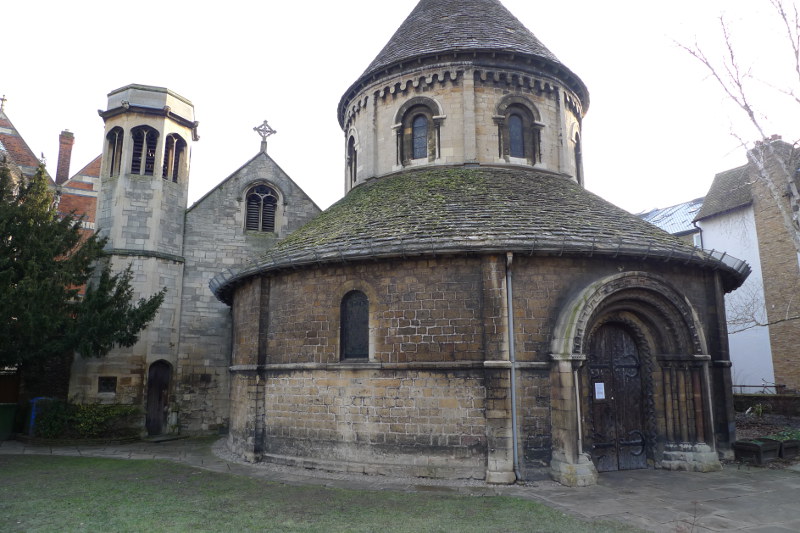I have to admit I was very excited about seeing the Round Church (1130) in Cambridge. It is, after all, one of only four medieval round churches left in the UK; and, as soon as people start mentioning Templars, Hospitallers, and fighting monks, I think mystery, intrigue, and at least one interesting story.
There is a fair bit of argument over the origins of the church (is it Templar? is it Hospitaller?); however, given its name and the timing, it’s likely the church was built by the Brothers of the Holy Sepulchre (a.k.a. fighting monks). It started its life as a wayfarers’ chapel (travellers church) and eventually became a parish church.
The entrance is very Norman with its zigzag design.
Inside are corbels decorated with faces and gargoyles. This is a common practice from medieval times. Prior to the 12th century the church encouraged respect of pagan culture and gargoyles ended up as decorations in many churches. After the 12th century people got touchy about what should be found in a church.
One such item that was often hunted down and destroyed was Roof Angels. In the 1600s, the rabid and obsessed puritan William Dowsing took it upon himself to travel the countryside and destroy all angels and other church decorations in a fit of religious zealousy.
As written in Roof Angels of the East Anglian Churches:
Dowsing took his despoiling gangs through Suffolk and Cambridgeshire from late 1643 to 1644 and was so proud of his work that he kept a diary detailing his triumphant harangues with the despairing churchwardens and listing the church contents he succeeded in smashing. Many of the Roof Angles fell victim to Dowsing’s rampage and the list makes sad reading.
The angel roof in Cambridge must have remained hidden during these raids or Dowsing was so overwhelmed by the sheer number of churches in Cambridge that needed sacking that he seemed to have missed the tiny little Round Church and it’s dark Angel Roof. As such, the angels in the 15th-century chancel still exist today.
